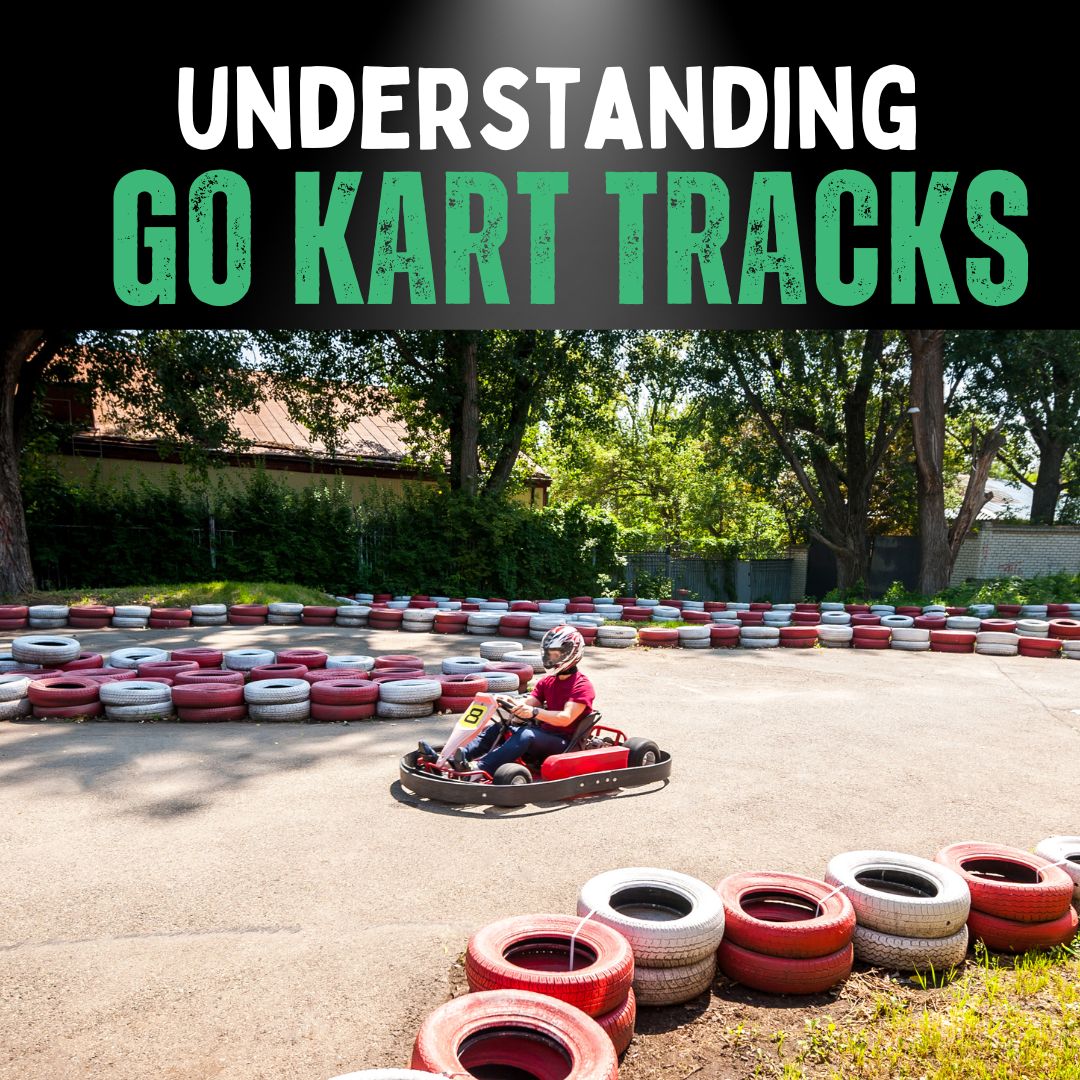
Updated: 08.05.25
Go-karting is packed with adrenaline and excitement, but what transforms it from basic driving to true mastery is understanding the track conditions.
This knowledge is essential not only for safety but also for improving performance and enjoying the sport to its fullest. Whether you're just starting out or looking to level up, learning how track surfaces and layouts impact your drive is a game-changer.
1. Track Surface and Design
The Foundation of Speed
The track surface lays the groundwork for a safe and enjoyable race. A hard, smooth surface provides the grip needed for precise manoeuvring. Design elements like track width and turn radius also shape your driving strategy.
Watch out for surface irregularities like bumps, debris, or wet patches. These elements can significantly alter your kart’s behaviour and your reaction on the track.
2. Gearing and Tuning

Customising Your Ride
Each track demands a unique setup. Gear ratios and tuning should match track conditions—tight, technical layouts need quick acceleration, while long straights benefit from higher top speeds.
Adjust your setup for acceleration, speed, and handling to match the track’s personality.
3. Driver Requirements and Safety
Safety: The Non-Negotiable Element
Height and age limits exist to ensure every racer can control the kart safely. Tracks typically require kids to be at least 6–8 years old and 48 inches tall. Taller drivers must still fit securely in the kart without restricted movement.
Rules vary by track and kart type—some even require licenses for advanced karts. Always check specific regulations before racing.
4. Track-Specific Considerations
Adapting to the Environment
- Temperature: Affects tyre grip and engine behaviour. Hot tracks may become slick; cold ones may reduce traction.
- Lighting: Visibility can impact safety and timing. Night tracks demand quicker reflexes and stronger focus.
- Weather: Rain or wind alters traction and handling. Wet track techniques become essential.
5. Maintenance and Record-Keeping
The Art of Keeping Track
- Maintenance Logs: Keep a checklist for inspections, engine servicing, and part replacements.
- Engine Hours: Record usage to prevent breakdowns.
- Performance Notes: Document lap times and kart behaviour under various conditions.
- Issue Tracking: Catch recurring problems early for optimal performance.
6. Types of Go-Kart Tracks
Exploring Different Arenas
- Sprint Tracks: Short asphalt circuits focused on speed and sharp corners.
- Speedway: Clay/asphalt ovals prioritising cornering skills.
- Endurance: Long tracks with pit stops and strategy-focused driving.
- Oval: Looped layouts demanding rhythm and control.
- Rental: Accessible tracks ideal for beginners learning safety and steering basics.
7. Common Mistakes to Avoid
- Soft braking: Dangerous in wet conditions.
- Excessive steering: Leads to overcorrection and spinouts.
- Hand movement: Unnecessary adjustments reduce control.
8. Safety Requirements for Racing
Beyond gear and driving habits, safety includes spectator zones, barrier setups, and kart inspections. Routine maintenance ensures each kart is race-ready.
Conclusion
Mastering go-karting isn’t just about going fast—it's about understanding the environment, fine-tuning your kart, and staying safe. Whether it’s your first time or your fiftieth, recognising how conditions affect your karting experience can give you a competitive edge and keep the fun rolling.
Frequently Asked Questions
What track conditions impact go-kart handling the most?
Surface grip, temperature, and weather (especially rain) have the most significant impact on kart behaviour and safety.
Do I need to tune my go-kart for every track?
Yes. Gearing, tyre pressure, and alignment should be adjusted based on the track layout and surface conditions for optimal performance.
Is there a standard height requirement for kids to race?
Most tracks require kids to be at least 48 inches tall. Some offer smaller karts for younger children starting at 6 years old.
How often should I maintain my go-kart?
Conduct basic checks before every race and a full inspection after every few sessions. Track maintenance with logs is recommended.
Get in Touch 🚀
Loved our article on Understanding Go-Kart Track Conditions? Discover more go-karting tips, tricks, and gear at RiiRoo.com.
Need help choosing the right ride? Use our Live Chat or check out our latest collection.







Share:
Consistency in Go Kart Setup is Crucial
How to Find The Best Grip on the Karting Track